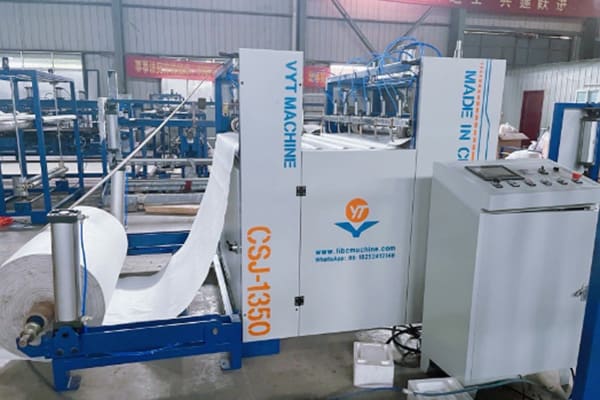In the modern manufacturing landscape, automation is increasingly recognized as a cornerstone of efficiency, precision, and safety. One of the key innovations in the bulk packaging industry is the Automatic Big Bag Cutting Machine. These machines are designed to handle the cutting of large bags—commonly known as FIBCs (Flexible Intermediate Bulk Containers)—with speed and accuracy, minimizing waste and maximizing productivity. However, to fully harness the benefits of this technology, it is essential to adhere to a well-defined Standard Operating Procedure (SOP).
The SOP for operating an Automatic Big Bag Cutting Machine serves as a guide for operators, ensuring that the machine is used correctly and safely. This procedure not only helps in maintaining the longevity of the equipment but also plays a critical role in safeguarding workers and optimizing the production process.
1. Pre-Operational Checks
Before operating the Automatic Big Bag Cutting Machine, it is crucial to perform a series of pre-operational checks to ensure the machine is in good working condition.
- Power Supply: Verify that the machine is connected to a stable power source and that the voltage matches the machine’s requirements.
- Machine Inspection: Conduct a thorough visual inspection of the machine for any signs of wear, damage, or loose components. Ensure that all safety guards and covers are securely in place.
- Lubrication and Maintenance: Check the lubrication levels in the machine’s moving parts, such as the cutting blades and conveyor belts, and replenish them if necessary. Refer to the manufacturer’s guidelines for proper lubrication intervals and types.
- Cutting Blade Condition: Inspect the cutting blades for sharpness and alignment. Dull or misaligned blades can lead to poor cuts, increased wear, and potential safety hazards.
- Emergency Stop Function: Test the emergency stop button to ensure it is functioning properly. This is a critical safety feature that must be operational at all times.
2. Machine Setup and Calibration
Once the pre-operational checks are completed, the machine must be set up and calibrated according to the specifications of the production run.
- Program Selection: Input the appropriate program settings into the machine’s control panel, including the desired bag dimensions, cutting speed, and material type.
- Blade Height and Tension Adjustment: Adjust the cutting blade’s height and tension according to the thickness of the material to be cut. This ensures clean and precise cuts while reducing wear on the blades.
- Feeder System Alignment: Align the feeder system to ensure the big bags are fed into the machine smoothly and without obstruction. Proper alignment minimizes the risk of jams and ensures consistent cutting quality.
- Trial Run: Conduct a trial run using a sample bag to verify the accuracy of the machine settings. Make any necessary adjustments to achieve the desired cut quality.
3. Operational Procedure
With the machine properly set up and calibrated, the actual operation can begin.
- Loading the Bags: Load the big bags onto the feeder system, ensuring they are positioned correctly according to the machine’s guidelines.
- Monitoring the Process: Continuously monitor the cutting process via the machine’s control panel and visual inspection. Look out for any irregularities, such as misfeeds or incomplete cuts, and address them immediately.
- Waste Management: Collect and manage any waste material generated during the cutting process. The machine’s design should include a system for directing waste into a designated collection area to maintain a clean and safe work environment.
- Periodic Checks: Perform periodic checks on the machine’s performance during operation. This includes monitoring blade wear, feeder alignment, and overall machine stability. Adjust settings if necessary to maintain optimal performance.
4. Post-Operational Procedures
After completing the cutting operation, it is essential to follow the proper shutdown and maintenance procedures to keep the machine in top condition.
- Machine Shutdown: Power down the machine according to the manufacturer’s instructions. This typically involves a controlled shutdown sequence to ensure all components come to a stop safely.
- Cleaning: Clean the machine thoroughly, removing any residual material, dust, or debris from the cutting area, feeder system, and control panel. Regular cleaning prevents material buildup that could affect future operations.
- Blade Maintenance: Inspect the cutting blades after each use. Sharpen or replace blades as necessary to ensure they are ready for the next operation.
- Maintenance Log: Record the machine’s operation details, maintenance performed, and any issues encountered in a maintenance log. This documentation is crucial for tracking the machine’s performance and scheduling preventive maintenance.
5. Safety Considerations
Safety is paramount when operating an Automatic Big Bag Cutting Machine. Operators must wear appropriate personal protective equipment (PPE), such as gloves, safety glasses, and hearing protection. Additionally, only trained and authorized personnel should operate the machine.
Conclusion
Adhering to the Standard Operating Procedure for an Automatic Big Bag Cutting Machine is vital for ensuring efficient, safe, and high-quality production. By following these guidelines, manufacturers can maximize the machine’s capabilities, minimize downtime, and protect their workforce, all while maintaining a consistent and sustainable manufacturing process.
Post time: Aug-15-2024


